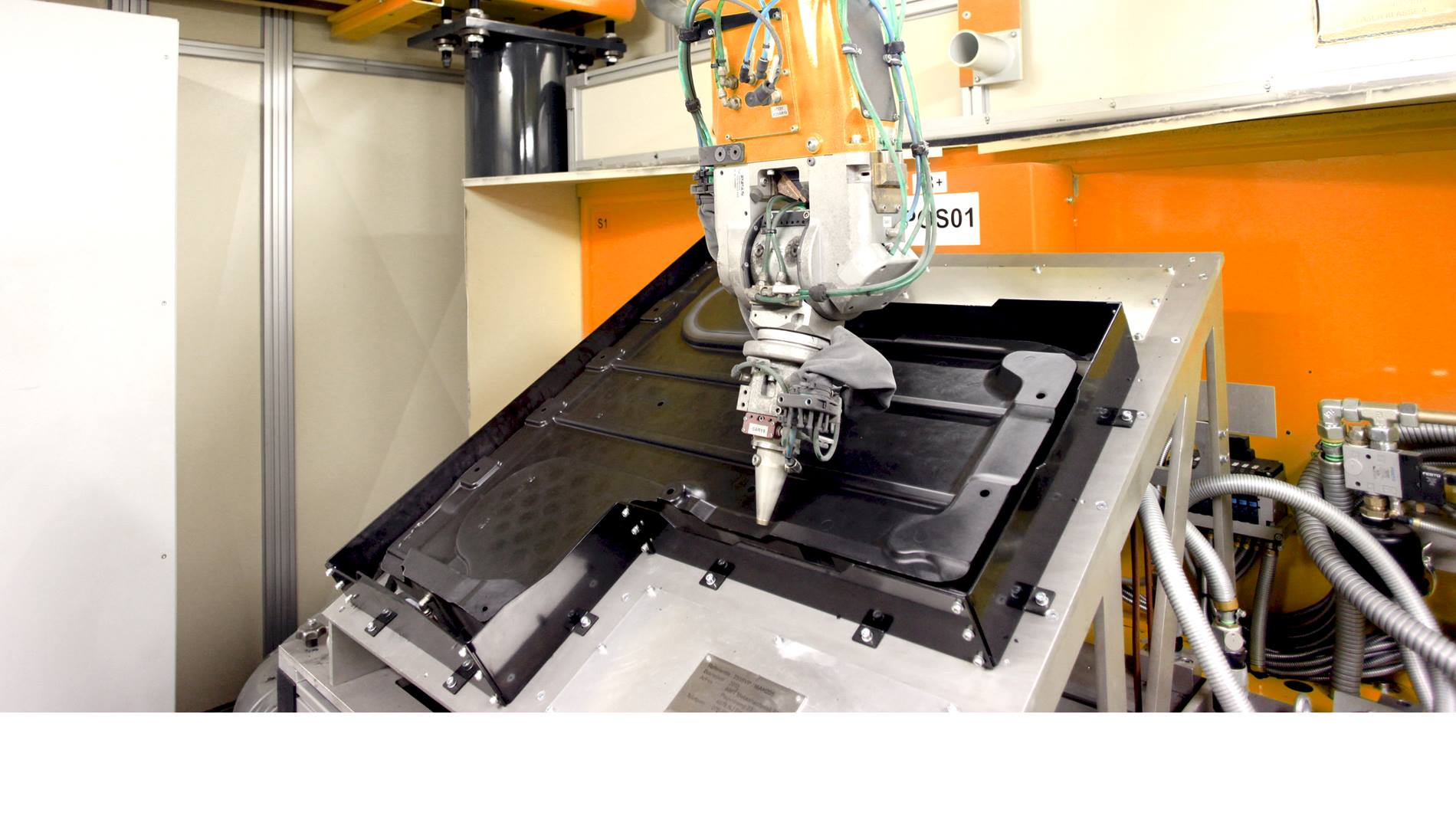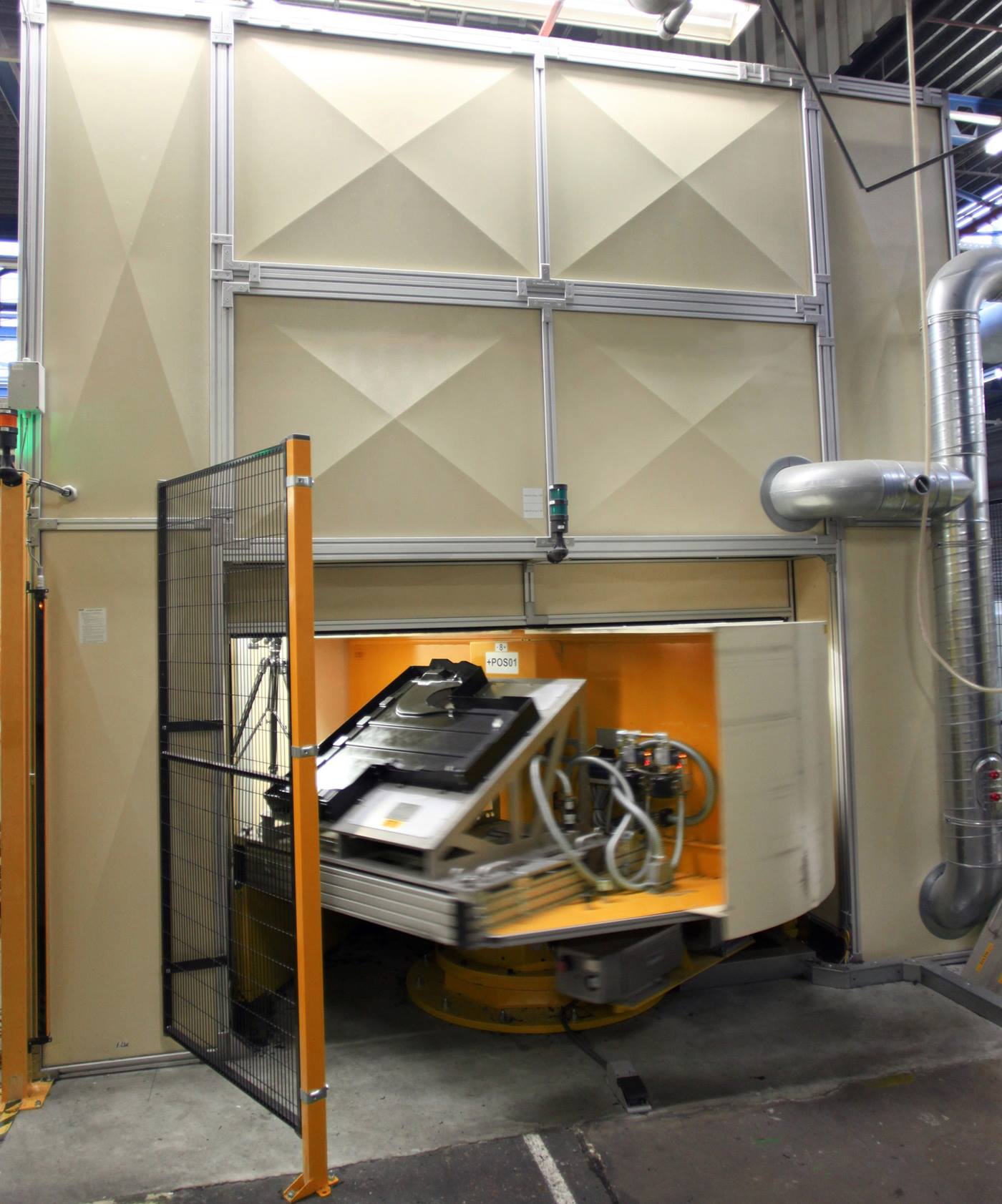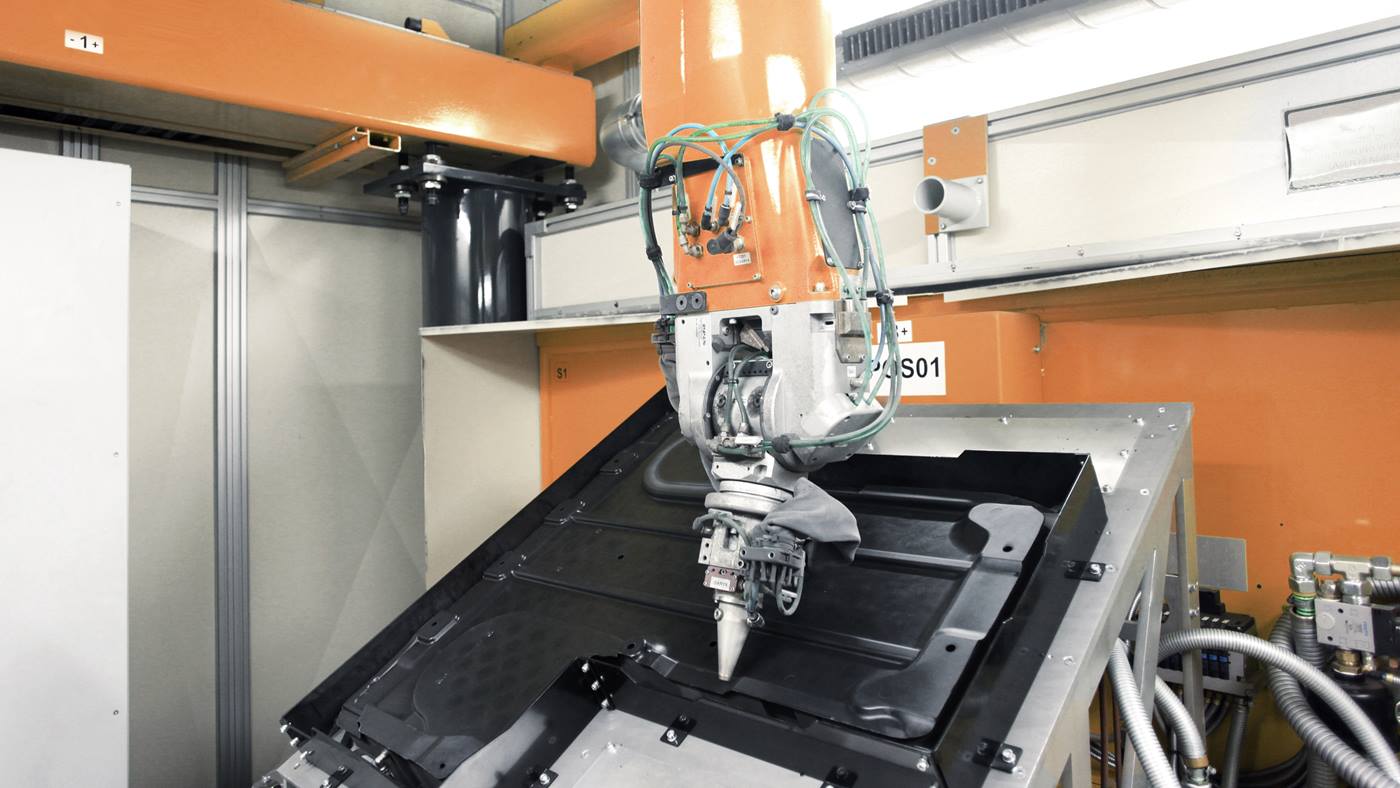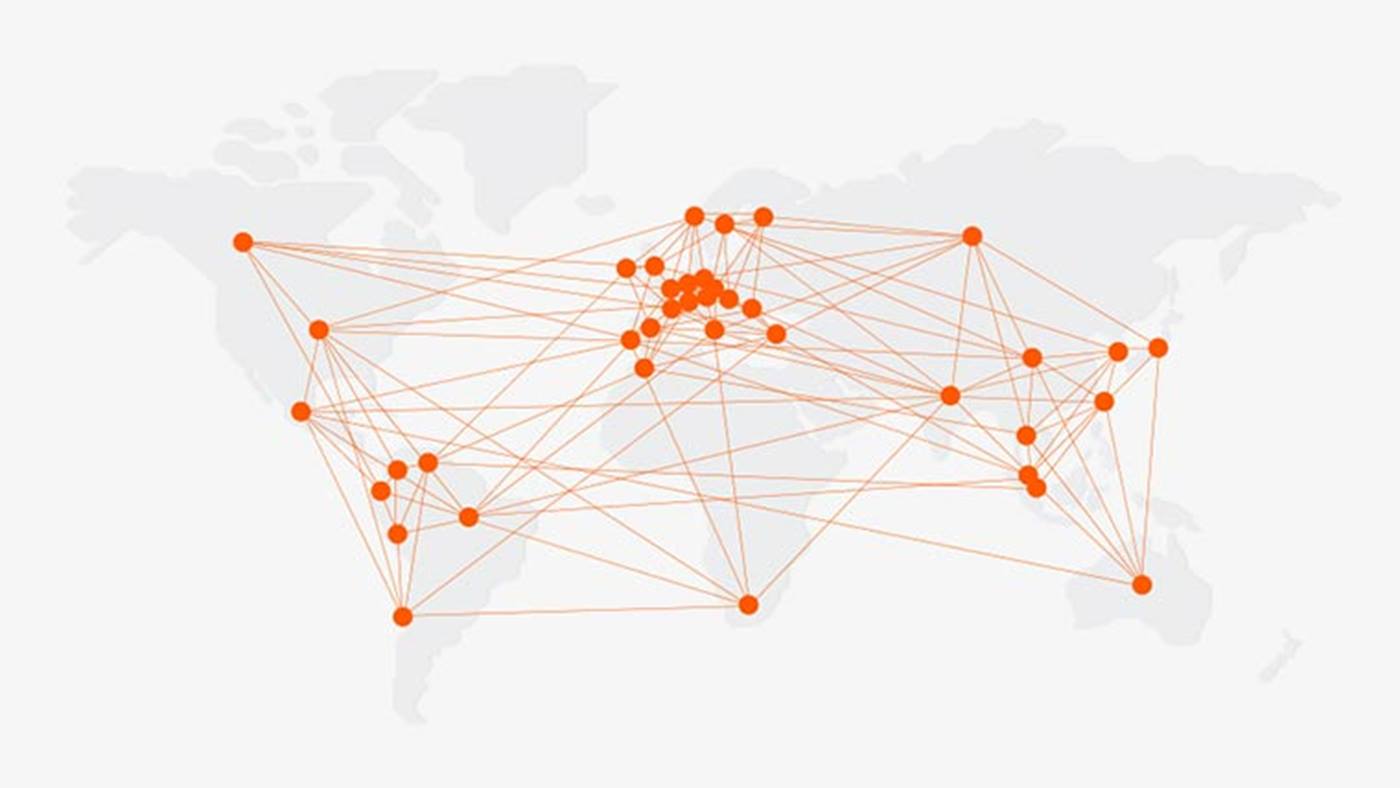The initial situation
Voestalpine Plastic Solutions – a subsidiary of the Voestalpine Group – manufactures and machines structural components made of plastic for the new Mercedes C-Class and E-Class at its plant in Roosendaal, Netherlands. Using laser cutting cells from Reis and without special tools, the manufacturer very quickly and flexibly cuts any contour out of moldings and also deburrs the parts in the same cycle. The corresponding parts – from the spare tire well, firewalls and bumpers to the cladding of the vehicle floor – have to be machined after the forming process with a pressing force of 100 - 2,500 tonnes. In order to avoid using heavy and expensive cutting dies, the company uses a laser to process parts such as the rear engine compartment panels for the Mercedes C-Class and E-Class gasoline models.




